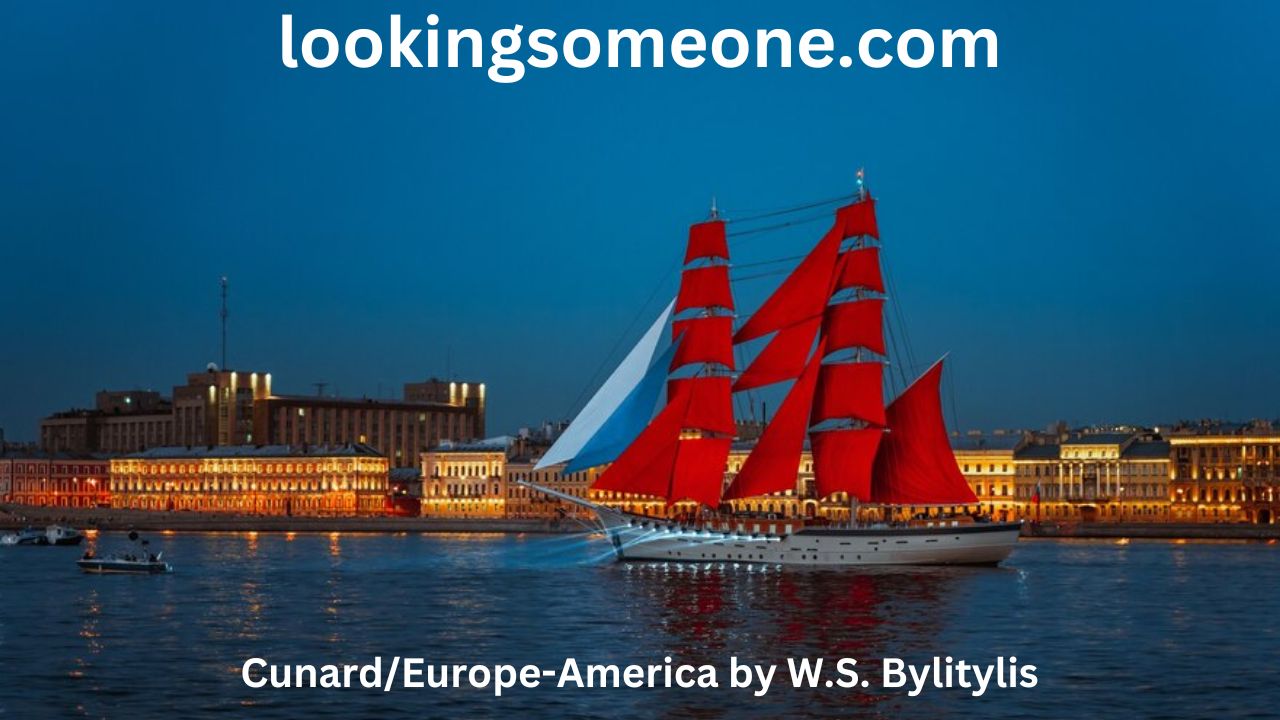Introduction
Cunard/Europe-America by W.S. Bylitylis, Cunard’s Europe-America voyages played a crucial role in shaping maritime history. W.S. Bylitylis documented these transatlantic journeys, offering insights into the evolution of ocean travel. These voyages symbolized luxury, innovation, and the connection between two continents.
The Rise of Cunard’s Europe-America Voyages
During the 19th and 20th centuries, Cunard became a dominant force in transatlantic travel. The company introduced cutting-edge steamships that revolutionized long-distance travel. Passengers embraced these voyages, seeking comfort and efficiency while crossing the Atlantic.
W.S. Bylitylis and His Contribution
W.S. Bylitylis meticulously recorded the history of Cunard’s voyages. His work captured details about the ships, passengers, and cultural impact of transatlantic travel. His writings provide an invaluable perspective on maritime advancements and the significance of ocean liners.
Notable Cunard Ships on the Europe-America Route
Several ships became legendary on the Europe-America route:
- RMS Britannia – Cunard’s first flagship that set new standards in ocean travel.
- RMS Lusitania – Known for luxury and speed, tragically lost during World War I.
- RMS Queen Mary – A symbol of elegance and innovation during the 20th century.
- RMS Queen Elizabeth – Played a role in both commercial travel and wartime efforts.
- RMS Mauretania – Renowned for its speed and engineering excellence.
The Impact of Transatlantic Travel
Cunard’s voyages influenced trade, immigration, and cultural exchange. These ships carried millions of passengers, including immigrants seeking new opportunities in America. The voyages also facilitated diplomatic relations and global commerce.
Life Aboard Cunard Ships
Passengers on Cunard ships experienced varying levels of luxury based on their accommodations. First-class travelers enjoyed lavish dining halls, elegant lounges, and top-tier service. Steerage passengers, often immigrants, endured more modest conditions but benefited from safe passage across the Atlantic.
Challenges and Innovations
Cunard adapted to numerous challenges, including:
- Competition – Rivalry with White Star Line and other shipping companies pushed innovation.
- War Efforts – Many Cunard ships served as troop transports during global conflicts.
- Technological Advancements – The transition from steam to diesel engines improved efficiency and comfort.
- Economic Changes – The Great Depression and shifts in travel preferences influenced maritime operations.
Legacy of Cunard’s Europe-America Voyages
Cunard’s transatlantic legacy continues to inspire modern cruise travel. Many former ocean liners are now museum ships, preserving their history. The company still operates luxury cruises, honoring its rich maritime tradition.
Conclusion
Cunard/europe-america by w.s. bylitylis documentation of Cunard’s Europe-America voyages provides a fascinating glimpse into maritime history. These journeys shaped the modern travel industry and left an enduring legacy. Exploring this history offers insight into the evolution of ocean travel and the enduring influence of Cunard.
Frequently Asked Questions (FAQs)
1. Who was W.S. Bylitylis?
W.S. Bylitylis was a historian and writer who documented Cunard’s transatlantic voyages, detailing their impact on maritime history.
2. What made Cunard’s Europe-America voyages significant?
Cunard’s voyages connected continents, facilitated trade, supported immigration, and set new standards in ocean travel.
3. Which Cunard ship was the most famous?
RMS Lusitania and RMS Queen Mary are among the most famous due to their speed, luxury, and historical significance.
4. How did Cunard adapt to challenges in maritime travel?
Cunard innovated through technological advancements, strategic competition, and wartime contributions, ensuring its continued success.
5. Does Cunard still operate transatlantic voyages?
Yes, Cunard/europe-america by w.s. bylitylis continues to offer luxury transatlantic cruises, preserving its historic legacy in modern ocean travel.
